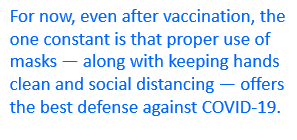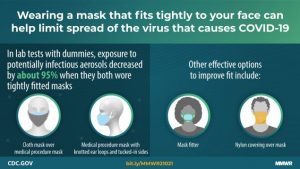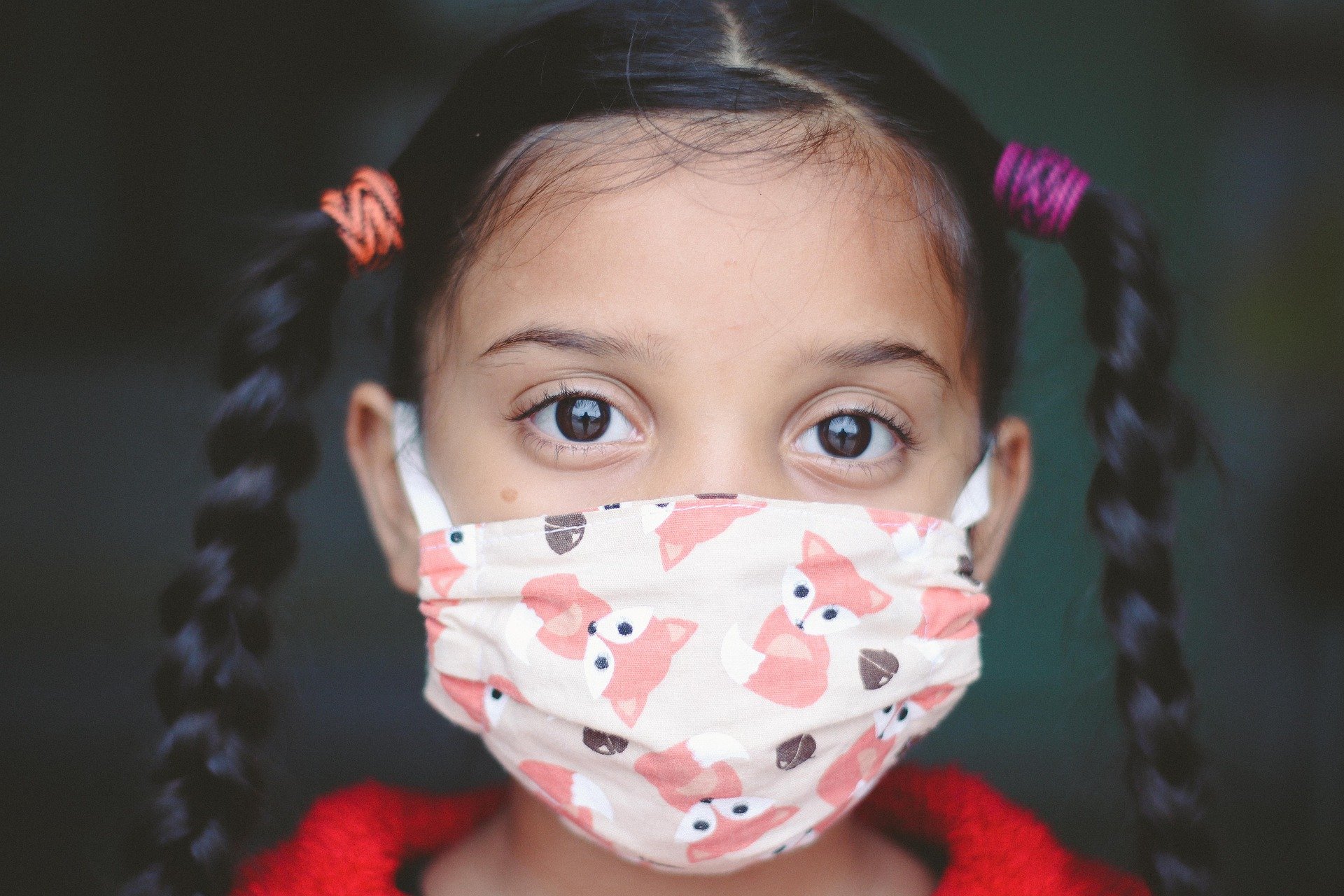CDC Update on Mask Use
Proper Fit and Double Masking
By Allison Kozicharow; Edited by Jessie Crowdy
Does your mask fit tightly? Do you double mask? The Centers for Disease Control and Prevention (CDC) just issued new guidelines on getting the best protection from COVID-19 when wearing a mask.
 The learning curve on understanding the COVID-19 virus remains steep. Information seems to change from day to day concerning vaccines, virus variants and the possible need for future boosters. It is unclear how long a vaccine offers protection and how long it will take to vaccinate enough people to create herd immunity. For now, even after vaccination, the one constant is that proper use of masks — along with keeping hands clean and social distancing — offers the best defense against COVID-19.
The learning curve on understanding the COVID-19 virus remains steep. Information seems to change from day to day concerning vaccines, virus variants and the possible need for future boosters. It is unclear how long a vaccine offers protection and how long it will take to vaccinate enough people to create herd immunity. For now, even after vaccination, the one constant is that proper use of masks — along with keeping hands clean and social distancing — offers the best defense against COVID-19.
WiRED International offers the following Q&A, adapted from CDC guidance, to help keep yourself and others safe when you wear your mask.
How do I maximize mask performance?
It is all about mask fit. Make sure your mask fits snugly against your face. Gaps can let air with respiratory droplets leak in and out around the edges of the mask. Choose a mask with a nose wire, a metal strip along the top of a mask. Nose wires prevent air from leaking out of the top of the mask. Bend the nose wire over your nose to fit close to your face. Also, wash your reusable mask after each use (click here for how to store and wash masks).
Note: This video shows you how to prepare a surgical mask for proper use.
What kinds of masks are best?
Use a cloth mask that has multiple layers of fabric. The layers keep your respiratory droplets in and other people’s out. A mask with layers will stop more respiratory droplets getting inside your mask or escaping from your mask if you are sick.
 Is double masking effective?
Is double masking effective?
Yes! The best combination is wearing a cloth mask over a disposable surgical mask. The second mask should push the edges of the inner mask against your face. Your second choice is wearing two cloth masks at a time.
How protective are face shields?
Face shields are not recommended by CDC for normal activities or as a substitute for masks. Wearing only a face shield allows unfiltered air to flow in and escape. Face shields are primarily eye protection for the person wearing them.
Any don’ts?
- Don’t combine two disposable masks. They are not designed to fit tightly and wearing more than one will not improve fit.
- Don’t use N95 masks unless you are a healthcare worker or other medical first responder — supplies are still limited.
- Don’t substitute scarves, ski masks or balaclavas for masks.


